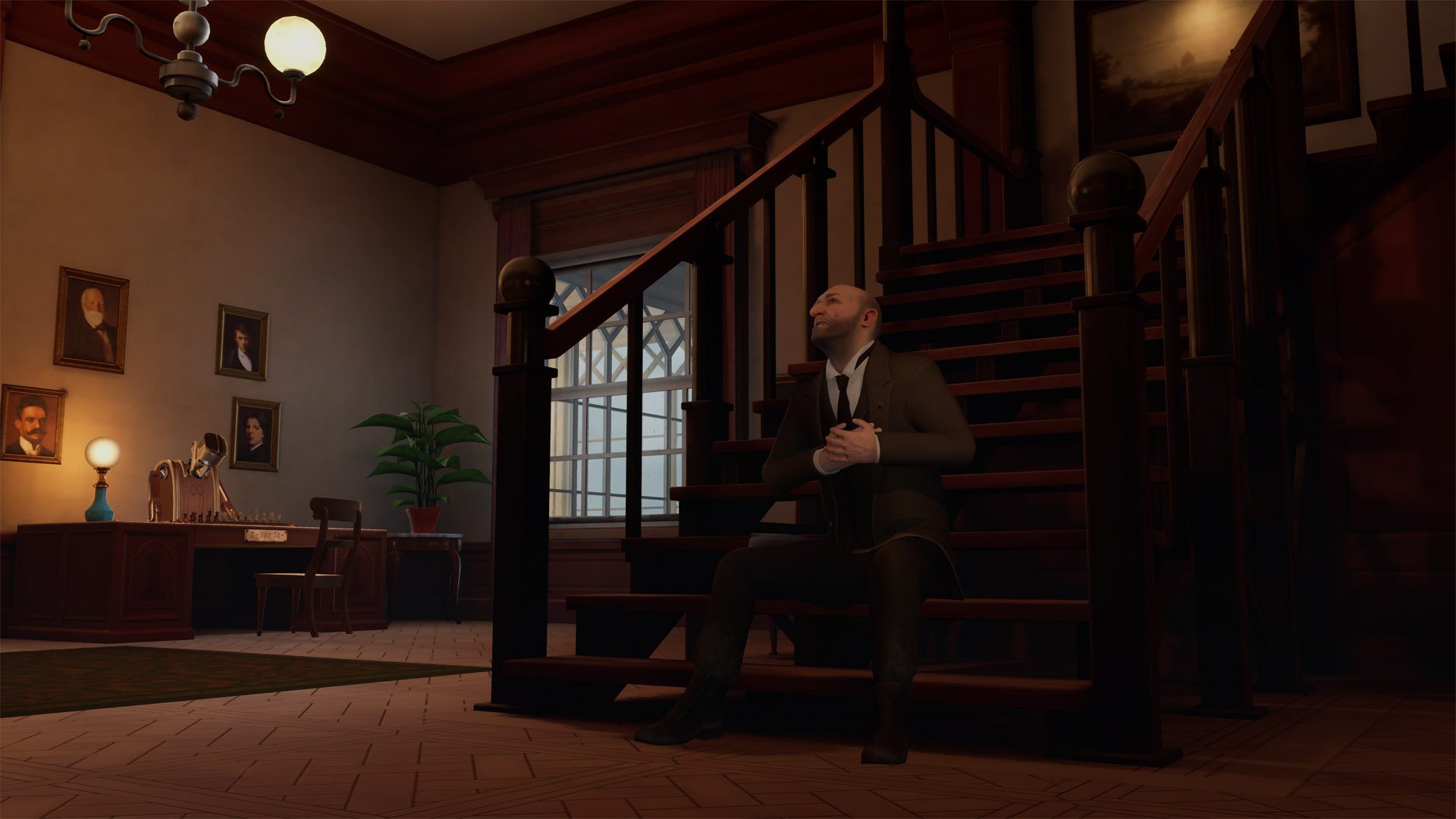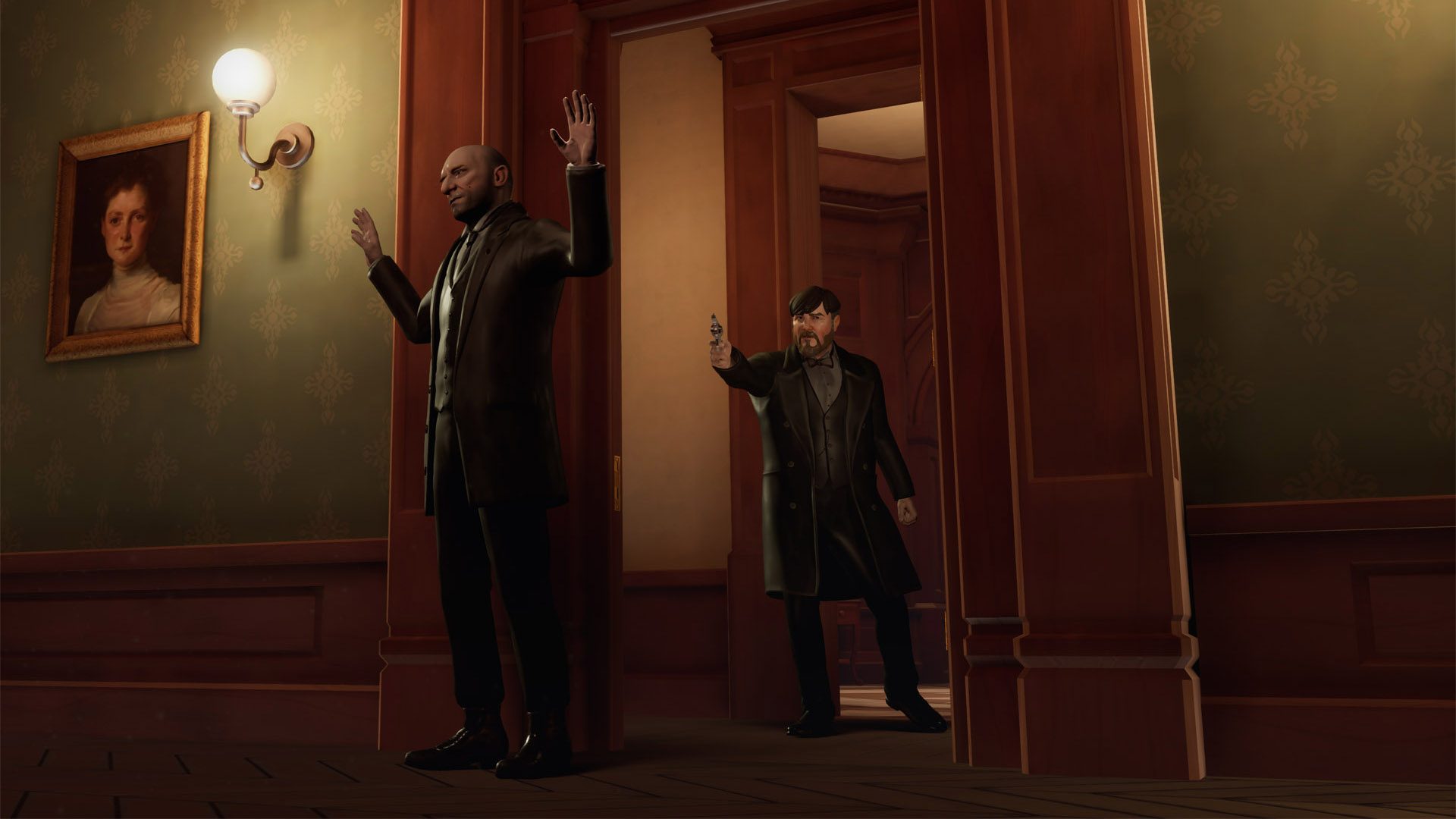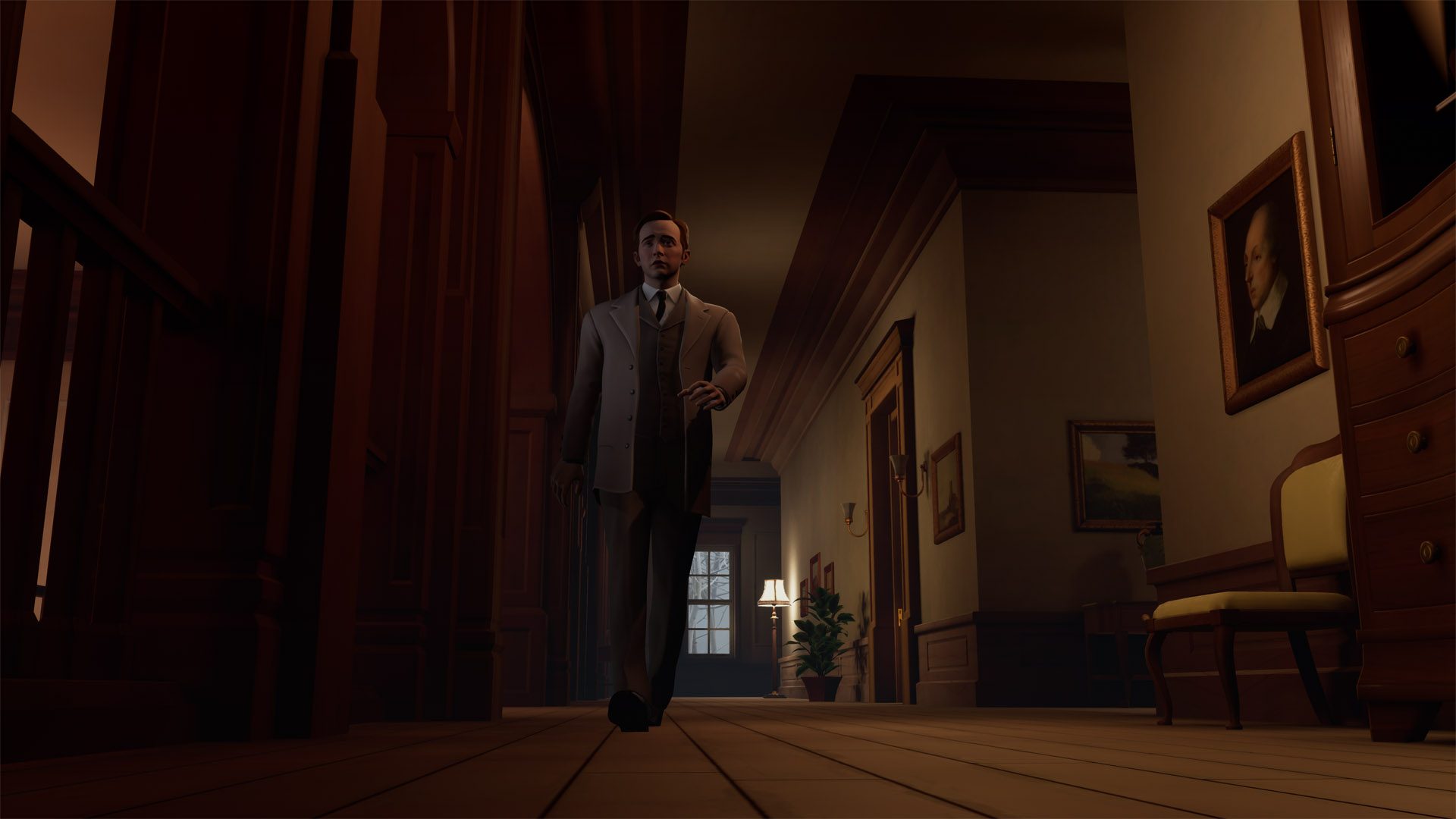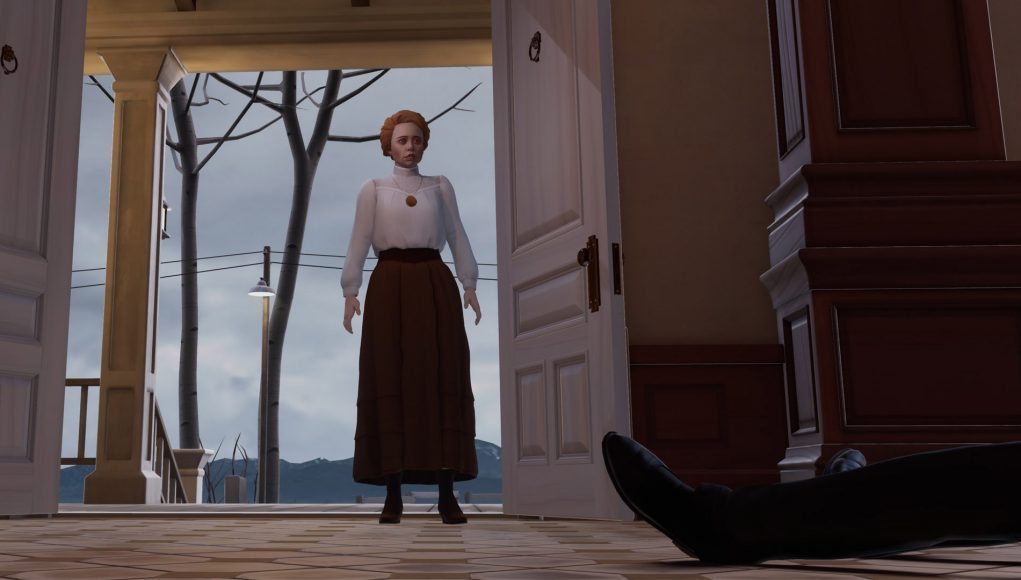Interactive theater is all about breaking the fourth wall, removing the barrier between the viewer and the play at hand. Traditionally this is done by getting the audience involved, usually in the guise of a dinner murder mystery party which oftentimes harks back to classics like the board game Clue (aka Cluedo) and literally anything by Agatha Christie. Tequila Works‘ upcoming VR experience, The Invisible Hours, doesn’t remove this barrier as such, but rather mobilizes it, letting you observe unnoticed as every aspect of the period piece unfolds before you.
To accomplish this, The Invisible Hours gives you the power to control time. With a game clock on your left hand and locomotion controls on you right, it effectively lets you explore every thread in the story in room-scale and follow all of the seven suspects across the experience’s remote mansion, located on an island where you try to figure out who killed world-renowned engineer and physicist Nikola Tesla.
Maybe it was the tortured and endlessly womanizing Thomas Edison? Maybe it was the oil magnate’s son who has a death wish? The French actress who lies for a living? Everyone has their secrets, and everyone has dirt on someone, so there’s no telling until the very end.
A quick note: The Invisible Hours will support Oculus Rift, HTC Vive and PlayStation VR, and includes support for respective motion controllers. If you’re not into teleportation and snap-turn ‘VR comfort mode’ controls, this may not be for you.
Getting a chance to play the first chapter (of four in total), my initial instinct was to let the story play out like a film; no stopping time and only following the main beats. It wasn’t long until a rough Cockney character slunk into the murder scene that I felt the indelible pull the power of time control now had over me. I had to retrace his steps to see what he was up to before all of this. I had to set back the clock.

Only a few minutes into the mystery, I rewound (shown in Benny Hill-esque real-time) to the point before you’re dropped into existence beside the first character to whom you’re introduced, the Swedish detective Gustav Gustav. This time, instead of restarting at the docks with Gustav, I followed the suspicious Cockney character to a side room to find him speaking to someone who wasn’t there. Was he praying? Was he insane? I couldn’t tell.
I sniffed around the entire house for clues, read every diary, listened to every bit of dialogue, and replayed the chapter over and over piecemeal until I had a full picture of what was transpiring—not only out of duty to cover this for the purpose of a written preview, but because I was honestly engaging with the story. That said, it took me an hour and a half to play through the first chapter, which would take you a real-time 15 minutes once through, an impossible task with just how interesting each character appears.

Although characters are safely on the near-side of the Uncanny Valley, they’re still imbued with humanity thanks to excellent voice acting and natural posturing. Speaking with Tequila Works’ CEO Raúl Rubio, he told me that script writing and motion capture made up a big portion of The Invisible Hours’ development time, which in his words “is not a game, or a movie, it’s immersive theater.”
Rubio told me that although requiring a lengthy 2-year development period, the studio is interested in producing more immersive theater experiences in the same vein, possibly covering more genres like sci-fi now that they’ve created a viable mold. When asked if 7 characters was the limit for a production like this, Rubio told me that adding, say, double the characters didn’t really double the work to be done, but rather made it an exponential task.

There’s also a question of how space is used. In The Invisible Hours, the story is constricted to a small island with a single mansion. While the house is fairly large (larger than you might think), it’s intentionally designed to allow for a good mix of friction between characters as to drive the story forward. Rubio told me it’ll be some time until we see immersive theater pieces covering larger areas, say the size of a city, and that ultimately it isn’t really possible in the short-term while maintaining the same production value.
The Invisible Hours is launching October 10th, so check back then for our full review.







